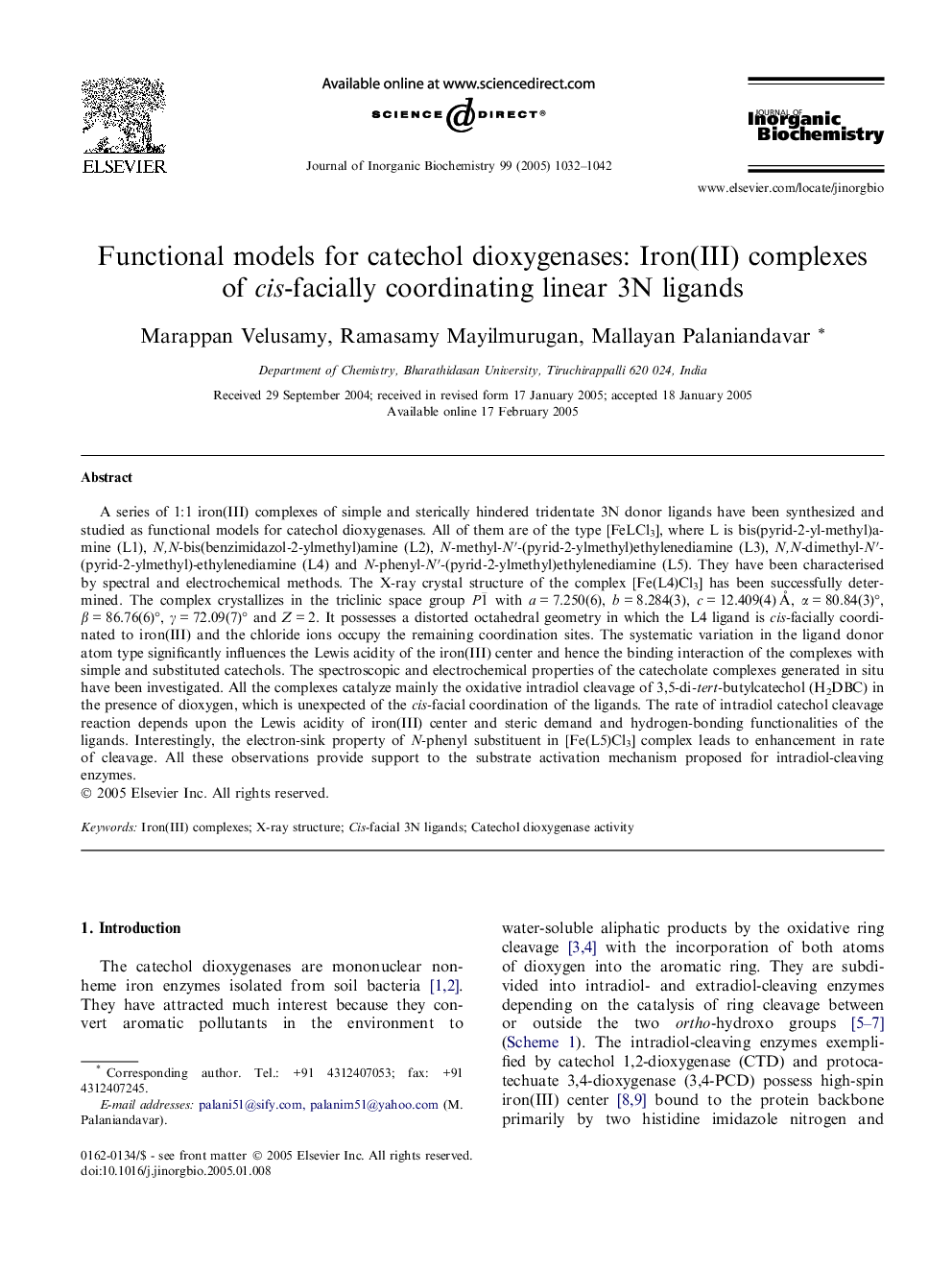| Article ID | Journal | Published Year | Pages | File Type |
|---|---|---|---|---|
| 10574313 | Journal of Inorganic Biochemistry | 2005 | 11 Pages |
Abstract
A series of 1:1 iron(III) complexes of simple and sterically hindered tridentate 3N donor ligands have been synthesized and studied as functional models for catechol dioxygenases. All of them are of the type [FeLCl3], where L is bis(pyrid-2-yl-methyl)amine (L1), N,N-bis(benzimidazol-2-ylmethyl)amine (L2), N-methyl-Nâ²-(pyrid-2-ylmethyl)ethylenediamine (L3), N,N-dimethyl-Nâ²-(pyrid-2-ylmethyl)-ethylenediamine (L4) and N-phenyl-Nâ²-(pyrid-2-ylmethyl)ethylenediamine (L5). They have been characterised by spectral and electrochemical methods. The X-ray crystal structure of the complex [Fe(L4)Cl3] has been successfully determined. The complex crystallizes in the triclinic space group P1¯ with a = 7.250(6), b = 8.284(3), c = 12.409(4) Ã
, α = 80.84(3)°, β = 86.76(6)°, γ = 72.09(7)° and Z = 2. It possesses a distorted octahedral geometry in which the L4 ligand is cis-facially coordinated to iron(III) and the chloride ions occupy the remaining coordination sites. The systematic variation in the ligand donor atom type significantly influences the Lewis acidity of the iron(III) center and hence the binding interaction of the complexes with simple and substituted catechols. The spectroscopic and electrochemical properties of the catecholate complexes generated in situ have been investigated. All the complexes catalyze mainly the oxidative intradiol cleavage of 3,5-di-tert-butylcatechol (H2DBC) in the presence of dioxygen, which is unexpected of the cis-facial coordination of the ligands. The rate of intradiol catechol cleavage reaction depends upon the Lewis acidity of iron(III) center and steric demand and hydrogen-bonding functionalities of the ligands. Interestingly, the electron-sink property of N-phenyl substituent in [Fe(L5)Cl3] complex leads to enhancement in rate of cleavage. All these observations provide support to the substrate activation mechanism proposed for intradiol-cleaving enzymes.
Keywords
Related Topics
Physical Sciences and Engineering
Chemistry
Inorganic Chemistry
Authors
Marappan Velusamy, Ramasamy Mayilmurugan, Mallayan Palaniandavar,
